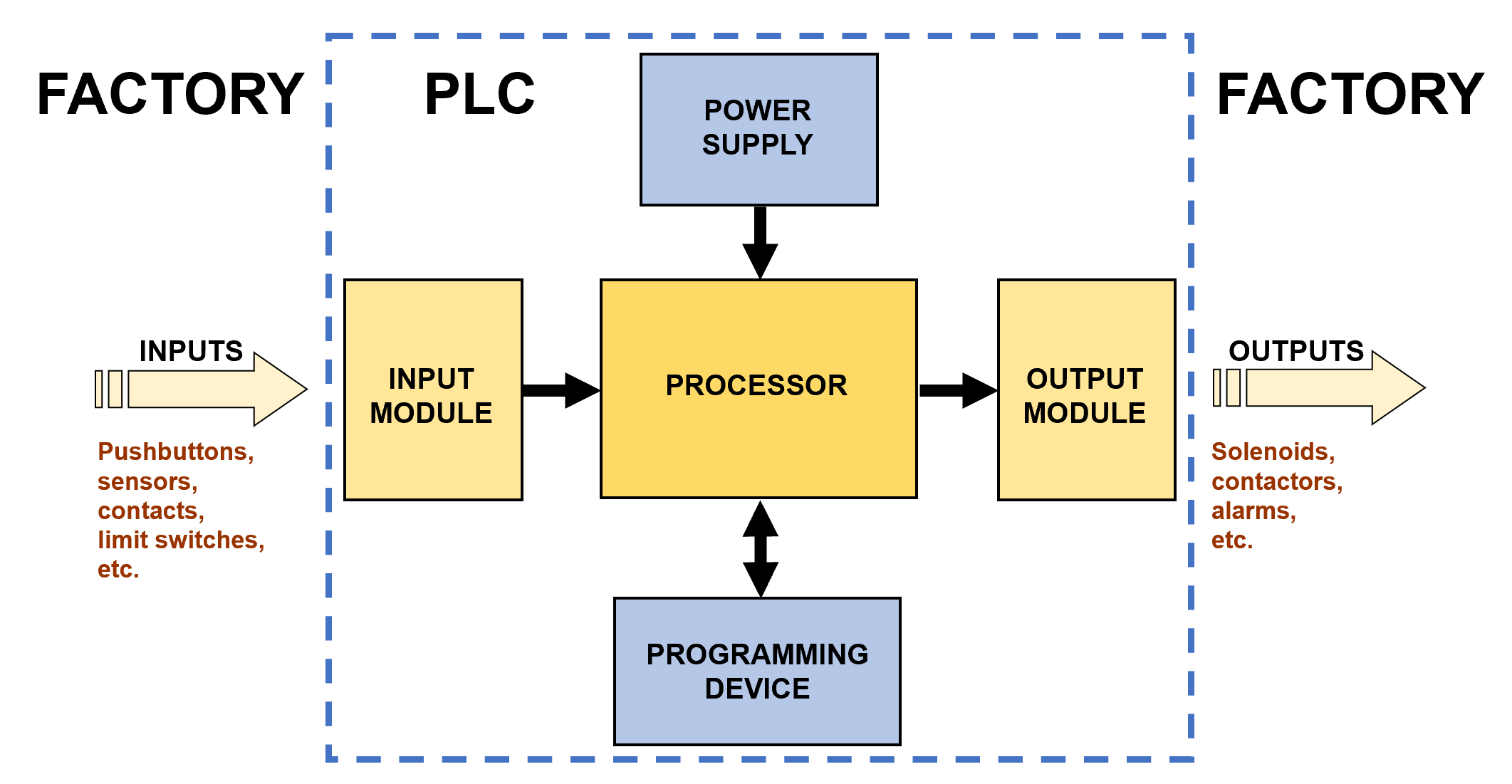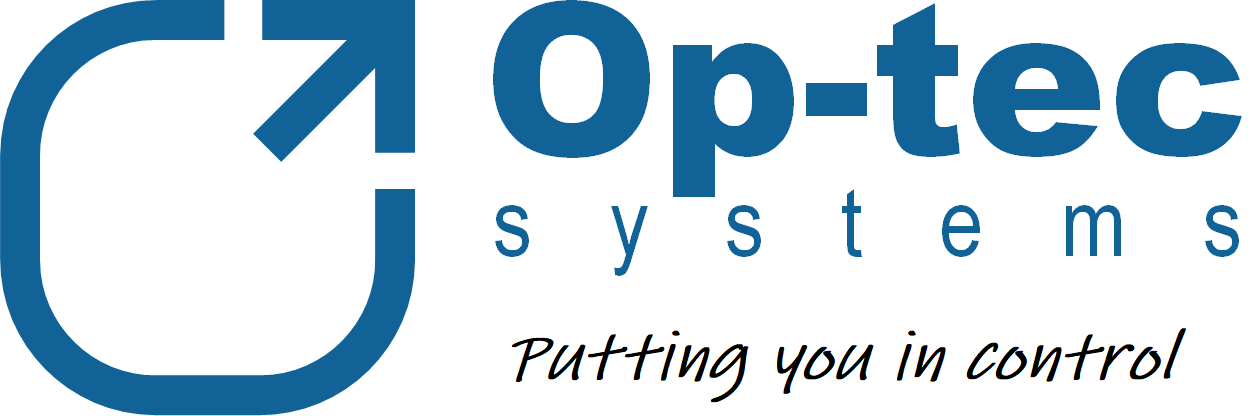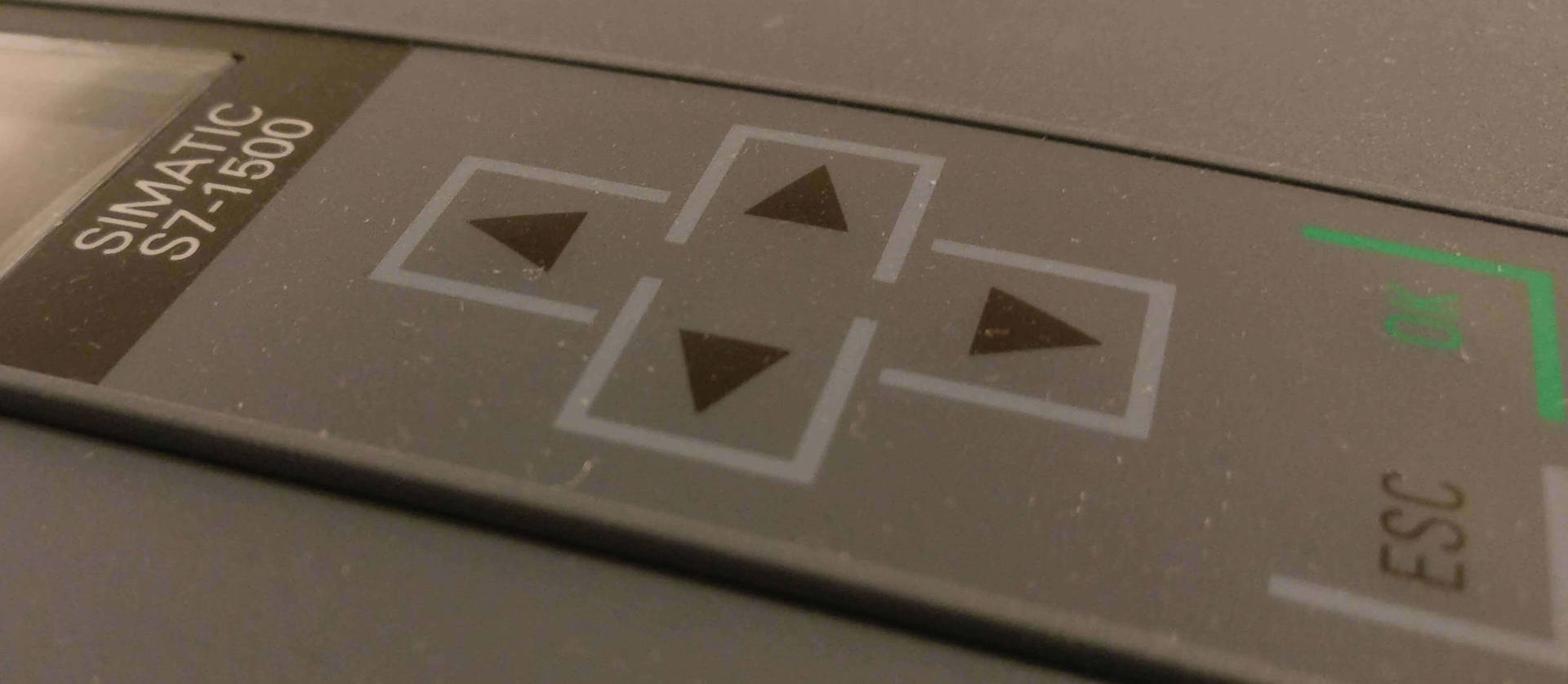Programmable Logic Controllers are widely used to automate, control and monitor all manner of equipment and proceses. PLCs are available for installation in almost any environment. As technology has matured PLCs have become increasingly affordable and highly capable devices, able to handle discrete, continuous and batch processes in any industry application.
Key Technologies
PLCs are microprocessor-based devices equipped with a variety of electrical terminals for connecting to sensors and actuators on the shop or plant floor. They read signal inputs to gain awareness of current process conditions, then based on the software program running in their processor, send output signals to control equipment they are connected to.
PLCs can communicate with a wide variety of devices using both ‘hard-wired’ electrical signals (4-20mA, 0-10V, 24V, …) and serial communications for equipment connected using fieldbus protocols (Modbus, Profibus, DeviceNet, …). Combined with extensive mathematical functions, high computational power, compatibility with ethernet-based protocols (OPC, MQTT, AMQP, …), and internet connectivity means modern PLC’s are able to replace PCs and servers in many cases.

This enables PLC’s to be used in a wide variety of applications, for instance both to control processes but also as data concentrators - collecting and pre-processing data before sending it to higher level systems.
Benefits
Small footprint and robust industrial design – PLCs can be installed almost anywhere, and have low power consumption.
Modular, scalable architecture – Minimises cost of future modification, expansion or integration. Being able to function alone or connected to hundreds, even thousands of others, means PLCs are used in applications of all sizes.
Industry standard programming languages – Widescale use of the IEC 61131-3 standard for software programming makes it relatively easy for technical personnel to interpret and maintain PLC logic.
Equipped with latest ‘web’ technology – Compatibility with open protocols make PLCs easy to interface with almost any system, from business systems and high-level dashboarding tools, to individual sensors on the factory floor.
Real-time calculations – Operational insights such as Operational Equipment Effectivenes (OEE), energy consumption or quality monitoring can be provided without exposing equipment to the internet or third-party systems.
For more information follow the link below to the Services section of our website where you can learn more about the help we can offer on this topic and many others relating to industrial process and manufacturing automation.

